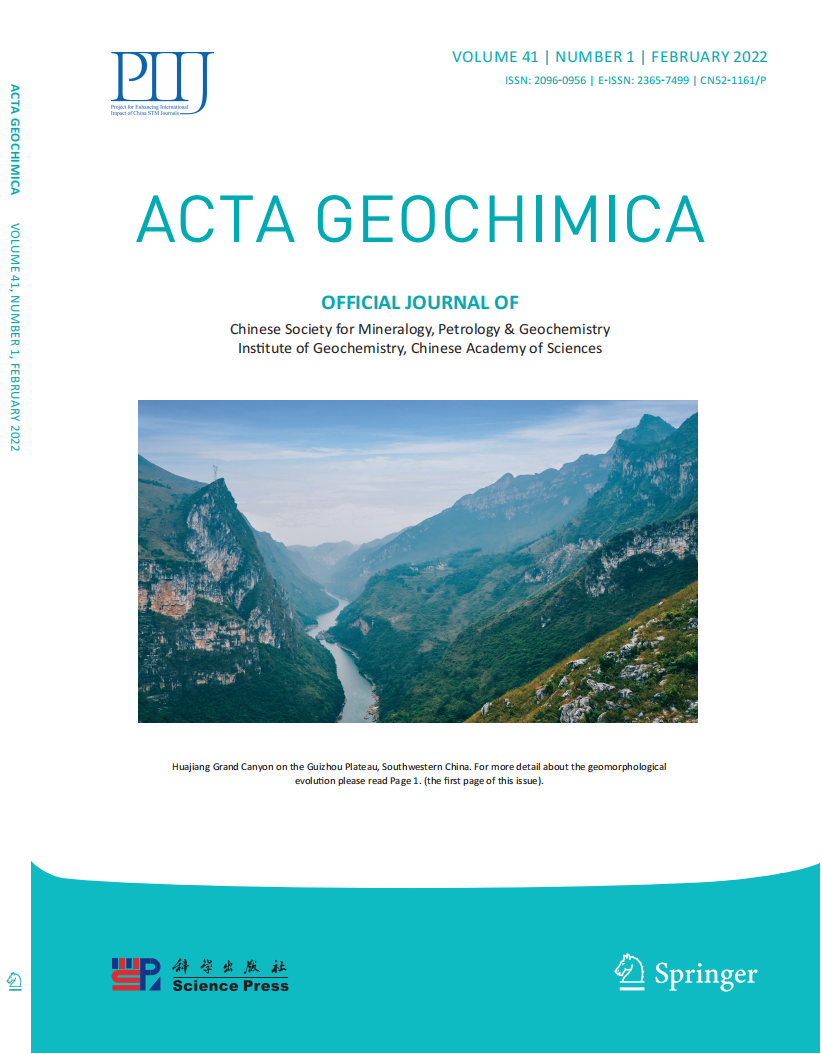- 钛学术文献服务平台 \
- 学术期刊 \
- 基础科学期刊 \
- 化学期刊 \
- 地球化学学报(英文)期刊 \
Fate and toxicity of nanoparticles in aquatic systems
Fate and toxicity of nanoparticles in aquatic systems
原文服务方:
地球化学学报(英文)
摘要:
Nanotechnology is a ground-breaking multidisciplinary fi eld across a broad spectrum of basic and applied sciences for producing and applying nano-sized materials for innovative solutions. The use of nanomaterials in industrial applications, medical products, and consumers has increased repeatedly over the last few years, and these applications will likely continue to grow. In an aquatic ecosystem, nanoparticles take entry through a direct route that includes industrial discharge, disposal of wastewater treatment e ffl uents, and indirect runof f from the soil. After reaching the aquatic environment, the nanomaterials are highly af fected by their backdrops and subsequently go through various conversions like agglomeration, aggregation, dissolution, sulfi dation, etc. The fate and the behavior of nanomaterials in the aquatic system not only depend on their physical-chemical properties but also on the pH,temperature, salinity, water hardness, and concentration of natural organic matter present in receiving water. In this review, emphasis has been given to the toxicological properties and potential risks of nanomaterials in terms of factors contributing to their toxicology, bioavailability, and accumulation in aquatic organisms as well as the environment. Furthermore, we summarize the published data on engineered nanoparticles' ef fect on aquatic organisms. The issues related to the accumulation and penetration of nanoparticles in the aquatic organism, their toxic ef fect, and biotransformation along with the food web are also discussed. Since nanomaterials are being increasingly released into aquatic bodies, it is important to pay greater attention to their toxicity and how it af fects the aquatic ecosystem. The nanomaterials are bioavailable to plants,resulting in trophic transfer, and they impact other organisms through biomagnifi cation, as discussed in this review.To close the enormous information gap, extensive research on the interactions and impacts of NPs on dif ferent species belonging to dif ferent trophic levels of the aquatic environment and the destiny of NPs along the food chain of the ecosystem is urgently needed.

推荐文章
The effect of pH on the sorption of gold nanoparticles on illite
Gold nanoparticles
Illite
Sorption
Charge
Electrostatic interaction
The morphological characteristics of gully systems and watersheds in Dry-Hot Valley, SW China
Morphological characteristics
Quantitative relationships
Gully system
Watershed
Dry-Hot Valley
In-situ nitrogen fate in the vadose zone of different soil types and its implications for groundwate
Vadose zone
Silty-loam
Silty-clay-loam
Nitrogen transformation
Groundwater vulnerability
Stable isotopes
内容分析
关键词云
关键词热度
相关文献总数
(/次)
(/年)
文献信息
| 篇名 | Fate and toxicity of nanoparticles in aquatic systems | ||
| 来源期刊 | 地球化学学报(英文) | 学科 | 地球科学 |
| 关键词 | |||
| 年,卷(期) | 2023,(1) | 所属期刊栏目 | |
| 研究方向 | 页码范围 | 63-76 | |
| 页数 | 14页 | 分类号 | |
| 字数 | 语种 | 中文 | |
| DOI | |||
五维指标
版权信息
全文
- 全文.pdf
引文网络
引文网络
二级参考文献 (0)
共引文献 (0)
参考文献 (0)
节点文献
引证文献 (0)
同被引文献 (0)
二级引证文献 (0)
2025(0)
- 参考文献(0)
- 二级参考文献(0)
- 引证文献(0)
- 二级引证文献(0)
引文网络交叉学科
相关学者/机构
期刊影响力
地球化学学报(英文)
主办单位:
中国科学院地球化学研究所
出版周期:
双月刊
ISSN:
2096-0956
CN:
52-1161/P
开本:
大16开
出版地:
贵州省贵阳市观水路46号地球化学研究所
邮发代号:
创刊时间:
1982-01-03
语种:
英文
出版文献量(篇)
294
总下载数(次)
0
期刊文献
相关文献
推荐文献
- 期刊分类
- 期刊(年)
- 期刊(期)
- 期刊推荐

 免费查重
免费查重










